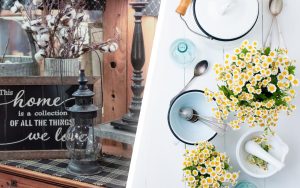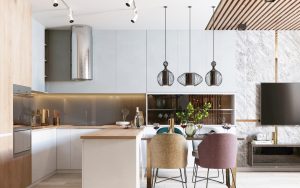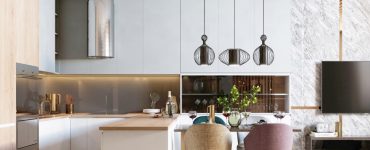When it comes to kitchen designs, few styles can evoke the warmth and nostalgia of the past quite like rustic kitchens. Among the various rustic kitchen themes, Farmhouse and Cottage kitchens stand out as two beloved and enduring options that have captivated homeowners with their timeless charm. Both styles embrace a sense of coziness, simplicity, and a connection to nature, making them perfect choices for those seeking a warm and inviting space to cook, dine, and gather with loved ones.
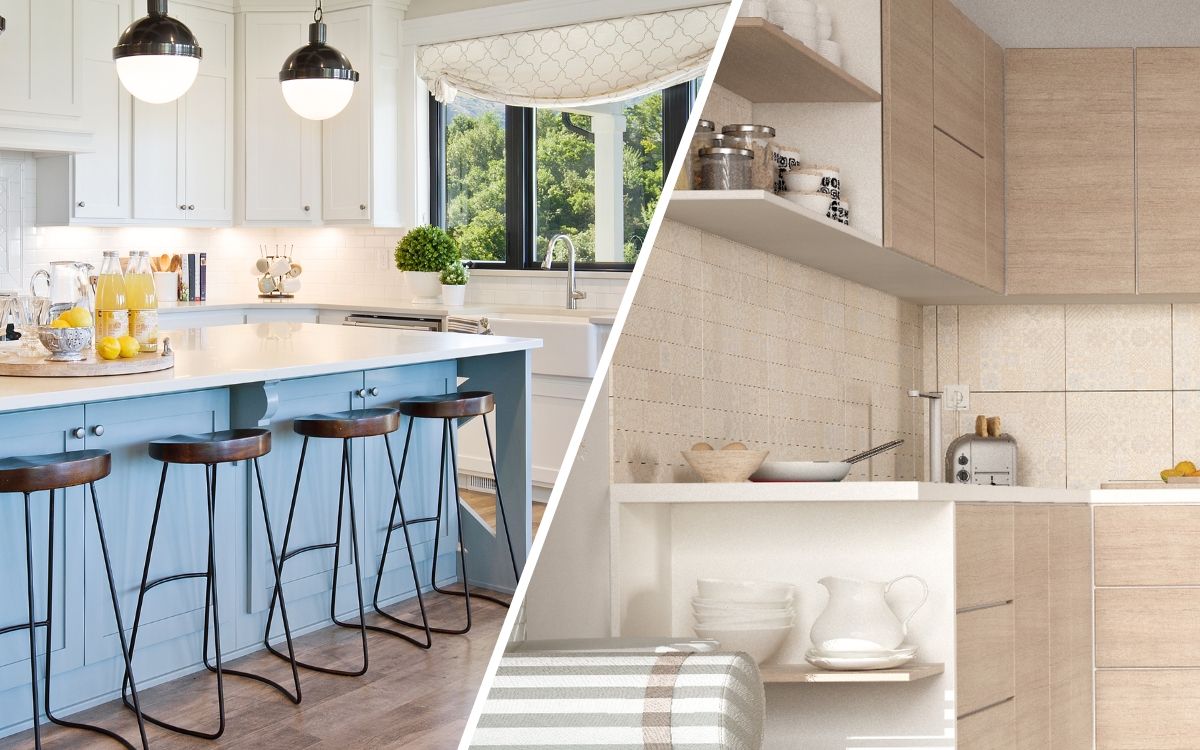
In this comprehensive comparison, we delve into the world of Farmhouse and Cottage kitchens, exploring their distinctive design elements, aesthetics, layouts, materials, and color palettes. By understanding the unique qualities of each style, you can confidently choose the one that best suits your preferences, lifestyle, and the ambiance you want to create in your kitchen.
Design Elements and Aesthetics
Farmhouse kitchens and Cottage kitchens share a common thread of rustic charm and a connection to the past. However, each style has its distinct design elements and aesthetics that set them apart and make them alluring to homeowners with varying tastes. Let’s dive into the captivating world of these rustic kitchen themes and explore their unique features.
Farmhouse Kitchen Aesthetics
The allure of a Farmhouse kitchen lies in its inherent simplicity and unpretentious beauty. Embodying the charm of rural farmhouses, this style brings the outdoors in and creates a welcoming atmosphere that instantly puts visitors at ease. Natural materials play a key role in Farmhouse aesthetics, with wooden beams, exposed brick walls, and hardwood flooring adding a touch of rugged elegance to the space. The use of shiplap walls, with their characteristic horizontal planks, is another hallmark of the Farmhouse style that adds depth and texture to the kitchen’s overall look.
Farmhouse kitchens are characterized by a neutral color palette, often featuring shades of white, beige, and various shades of gray. These colors create a serene backdrop that allows other design elements to shine, such as vintage and repurposed accents that evoke a sense of nostalgia.
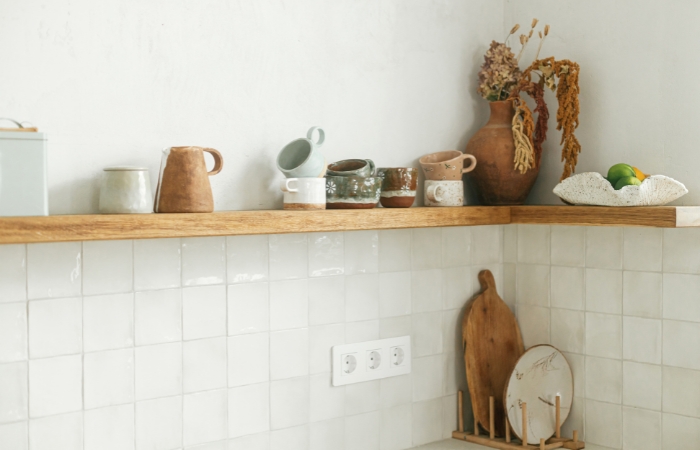
Open shelving and exposed storage are common features in Farmhouse kitchens, showcasing prized dishware and adding an element of practicality to the space. A classic and iconic feature of this style is the farmhouse sink, with its deep basin and apron front, serving as both a functional and aesthetically pleasing focal point.
The use of vintage and classic kitchen appliances, such as a classic range cooker, adds a touch of old-world charm to the space. Rustic light fixtures, often with wrought iron or distressed metal finishes, provide soft illumination and complement the overall farmhouse ambiance. The resulting atmosphere is one of cozy comfort, evoking memories of home-cooked meals and heartwarming gatherings with loved ones.
Cottage Kitchen Aesthetics
In contrast to the rustic simplicity of Farmhouse kitchens, Cottage kitchens exude a quaint and charming vibe that feels like a step back in time. These kitchens embrace an eclectic mix of design elements that come together to create a cozy and inviting space. Cottage kitchens often incorporate floral patterns and country-inspired decor, infusing the space with a sense of whimsy and playfulness.
Pastel color palettes dominate the Cottage kitchen aesthetics, featuring soft pinks, greens, dark blues, and warm yellows. These gentle hues impart a sense of serenity and cheerfulness, making the kitchen an inviting place to spend time in. Wide plank flooring, often in light or distressed finishes, adds to the overall charm and contributes to the cottage-inspired atmosphere.
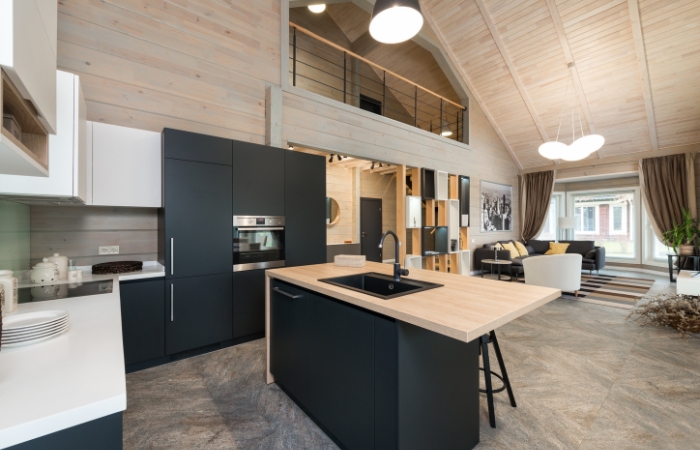
Cottage kitchens are characterized by their use of beadboard panels on walls and cabinetry, giving the space a textured and cottage-like feel. Vintage-inspired appliances, with their rounded edges and retro design, further enhance the nostalgic ambiance of the kitchen. Delicate light fixtures with ornate details and antique finishes add a touch of elegance, providing gentle illumination that complements the soft and romantic atmosphere.
Handcrafted elements and unique accessories play a significant role in Cottage kitchens, showcasing the homeowner’s personality and adding a personal touch to the space. The result is a kitchen that feels like a cherished haven, where cooking becomes a delightful adventure and the heart of the home beckons with its warm embrace.
Layout and Functionality
Farmhouse kitchens and Cottage kitchens not only possess distinct design aesthetics but also offer different layouts and functionalities that cater to varying lifestyle needs and space requirements. Let’s explore the unique layout and functionality features that define each rustic kitchen style.
Farmhouse Kitchen Layout
The layout of a Farmhouse kitchen is designed to be spacious, functional, and conducive to gatherings. At the heart of a Farmhouse kitchen is often a large kitchen island, serving as a focal point and providing ample workspace for meal preparation and entertaining. This central island becomes the hub of activity, allowing family and guests to gather around while the cook prepares delicious meals.
An essential feature of the Farmhouse kitchen layout is the provision of extensive counter space. This allows for multiple cooking tasks to be performed simultaneously, making it convenient for those who enjoy preparing elaborate meals or baking projects. The abundance of counter space also provides room for decorative displays, such as potted herbs or vintage kitchenware, adding to the rustic charm of the space.
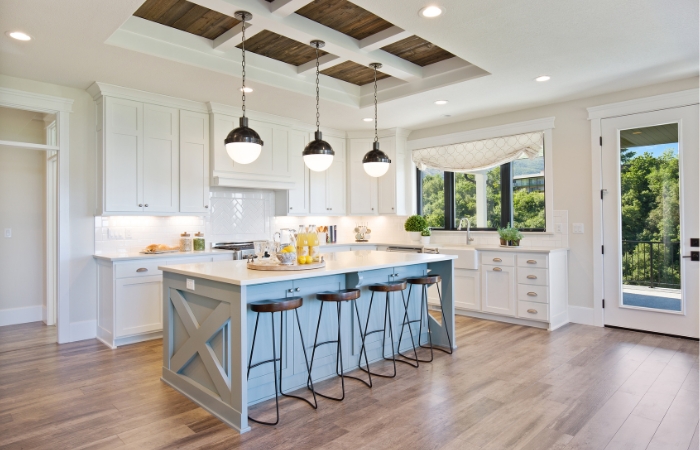
Farmhouse kitchens often include a large dining table within or adjacent to the kitchen area. This design feature encourages communal dining experiences, creating a warm and inviting space for family meals and friendly get-togethers. The integration of the dining table into the kitchen fosters a sense of togetherness, where cooking, dining, and bonding seamlessly intertwine.
To ensure practicality and functionality, Farmhouse kitchens typically incorporate a spacious walk-in pantry. This storage area allows for the organization of dry goods, kitchen supplies, and non-perishables, reducing clutter in the main kitchen space. With everything at hand, the cook can focus on culinary creativity without disruptions.
Cottage Kitchen Layout
Cottage kitchens, known for their cozy and intimate charm, often feature a compact layout that maximizes space while maintaining functionality. Due to their smaller size, Cottage kitchens prioritize clever and space-saving solutions, ensuring that every nook and cranny is efficiently utilized.
In a Cottage kitchen, multi-functional furniture plays a vital role in optimizing space. From foldable tables and drop-leaf islands to built-in banquettes with hidden storage, these smart design choices provide versatility and practicality. Cottage kitchens excel at making the most of limited space without compromising on style or comfort.
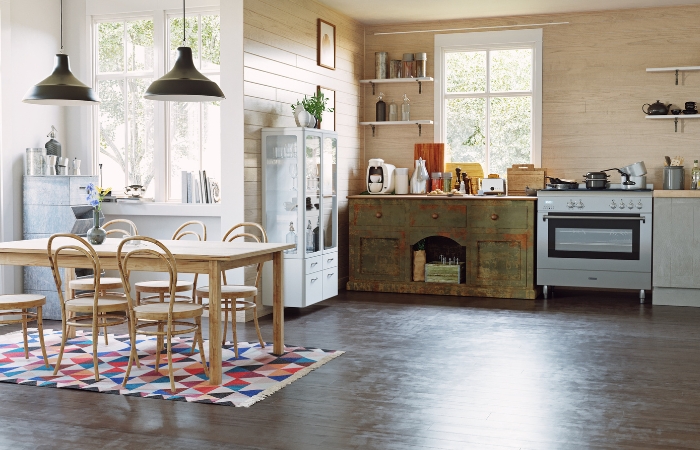
Given their smaller footprint, Cottage kitchens often forgo a separate dining area and instead incorporate an intimate dining nook within the kitchen space. This nook might consist of a cozy corner with a small table and a few chairs, offering a delightful spot for enjoying morning coffee or sharing a meal with a loved one.
The design of Cottage kitchens often incorporates creative storage solutions. From utilizing vertical wall space with open shelving to installing overhead pot racks or magnetic knife strips, these kitchens prioritize functionality without sacrificing the nostalgic and whimsical feel.
Materials and Finishes
Farmhouse kitchens and Cottage kitchens each possess distinct materials and finishes that contribute to their unique rustic charm and aesthetic appeal. From natural elements to vintage-inspired touches, let’s delve into the materials and finishes that define the character of these two beloved kitchen styles.
Farmhouse Kitchen Materials
The Farmhouse kitchen style celebrates the beauty of natural materials, embracing a connection to the earth and the simplicity of rural living. Wood plays a prominent role in Farmhouse kitchens, often seen in exposed wooden beams, hardwood flooring, and cabinetry. The warmth and texture of wood add a sense of rugged elegance, creating a welcoming ambiance that reflects the heart of the home.
Butcher block countertops are a quintessential feature of Farmhouse kitchens. These durable and versatile surfaces not only provide ample workspace for meal preparation but also exude a rustic charm that complements the overall aesthetic. The wood’s natural grain and patina tell a story of years of use, adding to the kitchen’s timeless appeal.
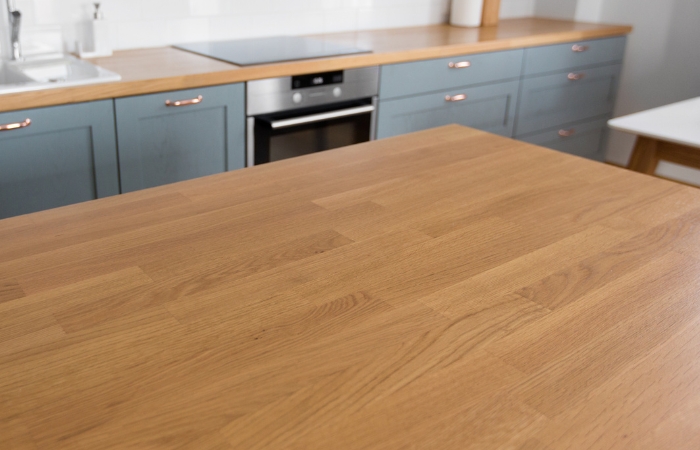
Shiplap walls are another distinctive material used in Farmhouse kitchens. The horizontal wooden planks, often painted in white or light shades, add depth and visual interest to the space. The shiplap’s clean lines and simple elegance create a backdrop that highlights other design elements, such as vintage accents or farmhouse-inspired artwork.
Farmhouse kitchens may also incorporate exposed brick walls, either as original architectural features or through carefully crafted faux finishes. The rough texture and warm hues of brick bring an authentic touch of history and character to the kitchen, blending harmoniously with the other natural materials.
Cottage Kitchen Materials
Cottage kitchens embrace an eclectic mix of materials and finishes, creating a whimsical and inviting space reminiscent of a cozy country cottage. Floral and patterned wallpapers are a hallmark of Cottage kitchens, infusing the space with color, personality, and a touch of vintage charm. These wallpapers often feature delicate floral motifs or playful patterns that add visual interest to the walls.
Wide plank flooring is a popular choice for Cottage kitchens, bringing a sense of rustic comfort and nostalgia. Light or distressed finishes enhance the cottage-inspired atmosphere, making the kitchen feel like a cherished and time-honored space.
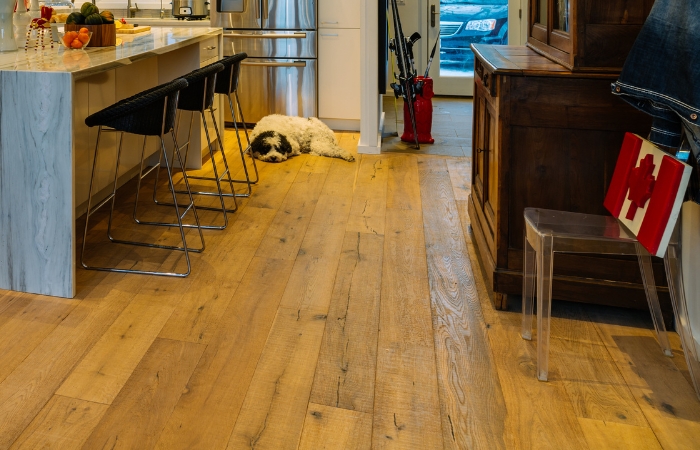
In contrast to the wood-dominated Farmhouse kitchens, Cottage kitchens often feature beadboard panels on walls and cabinetry. The vertical grooves of beadboard panels add texture and visual appeal, contributing to the cottage-like ambiance.
Marble or quartz countertops are commonly found in Cottage kitchens, offering a refined and elegant touch. The smooth and luxurious surfaces provide a beautiful contrast to the whimsical elements of the space, creating a balanced and visually appealing kitchen.
Conclusion
It becomes evident that these two rustic themes hold their individual charm and allure for homeowners seeking an inviting kitchen space with timeless appeal. Each style boasts its distinct features, from the farmhouse’s rugged simplicity and natural materials to the cottage’s whimsical pastels and cozy aesthetics. Ultimately, your kitchen should be a reflection of your personality and lifestyle, a place where you can find joy in cooking and share cherished moments with family and friends. Whichever style you choose, both Farmhouse and Cottage kitchens are bound to bring that touch of nostalgia, warmth, and comfort to your home for years to come.




